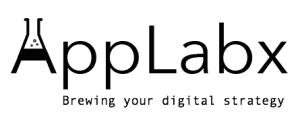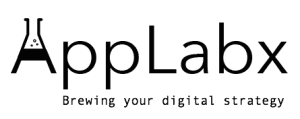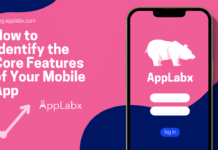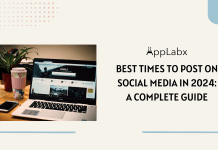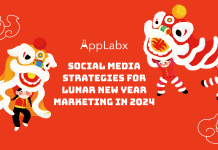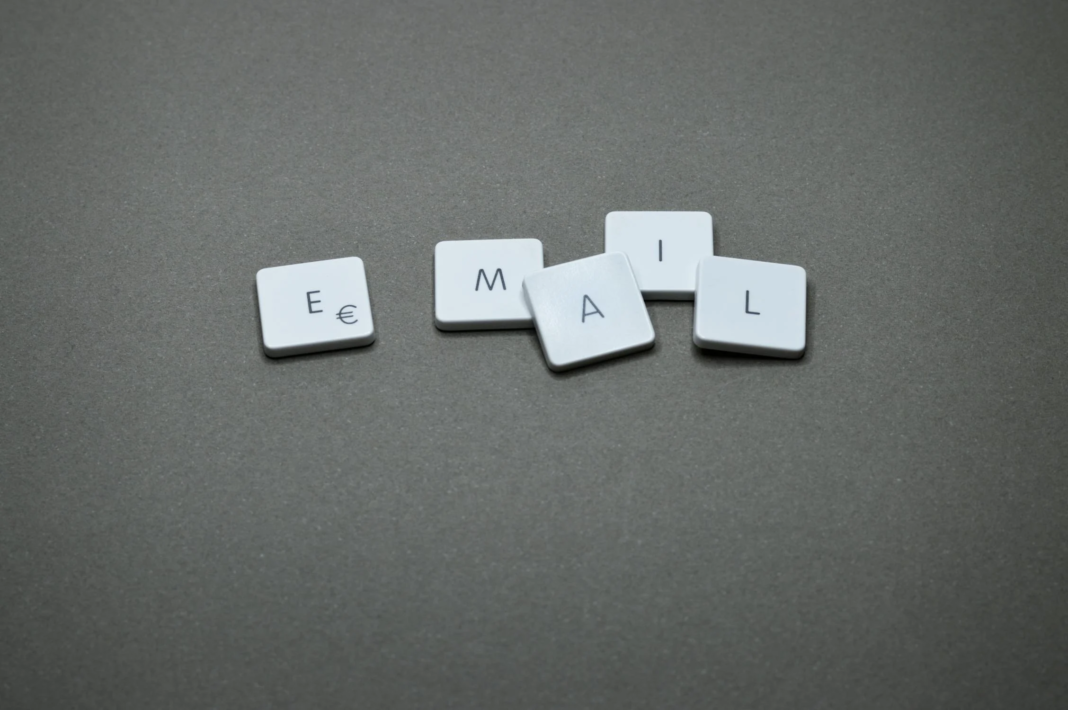Key Takeaways
- Building a quality email list through organic methods ensures better engagement and higher conversion rates.
- Segmenting your email list and personalizing content boosts open rates and subscriber satisfaction.
- Complying with email marketing laws like GDPR and CAN-SPAM protects your brand and builds trust with subscribers.
In the ever-evolving world of digital marketing, one strategy has consistently proven its value over the years: email marketing.
Despite the rise of social media, paid advertising, and influencer marketing, email remains one of the most reliable, cost-effective, and high-converting communication channels for businesses of all sizes.
Whether you’re a small business owner, an entrepreneur, or a content creator, building and maintaining an engaged email list can be one of the most powerful assets for sustainable growth.
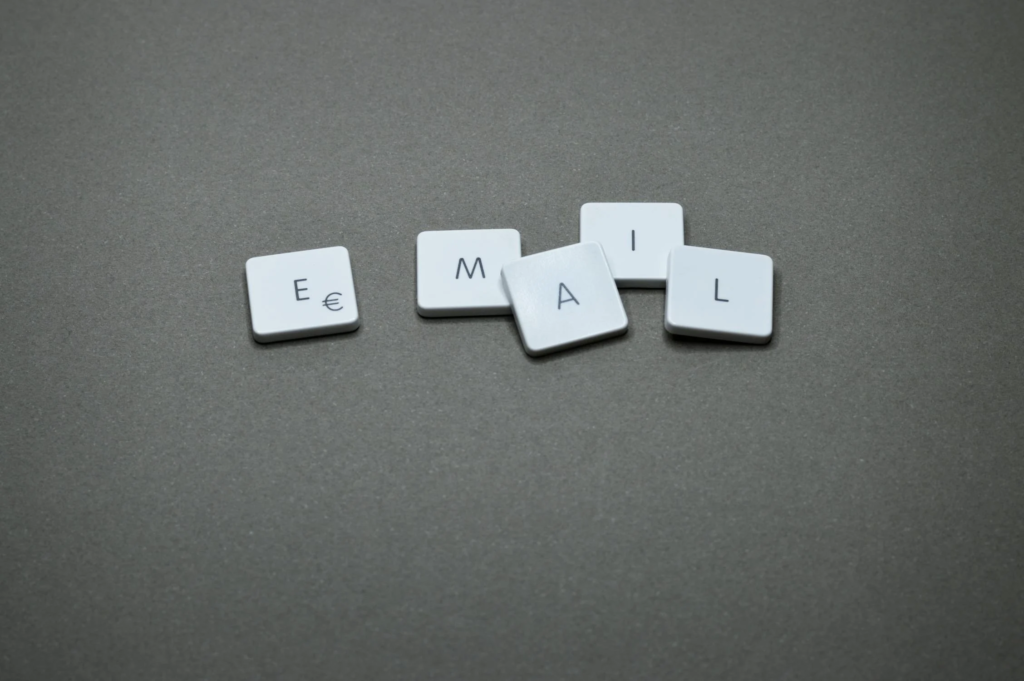
Why Email Marketing is More Relevant Than Ever
Many marketers often question whether email marketing is still relevant in today’s fast-paced digital landscape.
The truth is, email marketing continues to deliver some of the highest returns on investment (ROI) compared to other marketing channels. According to studies, email marketing has an average ROI of $42 for every $1 spent, making it one of the most lucrative strategies for engaging and converting customers.
Unlike social media, where algorithms control reach and visibility, an email list provides direct access to your audience. You don’t have to worry about whether your posts are getting buried under a flood of content or whether your ads are getting enough impressions. Instead, you have a direct line of communication with people who have actively chosen to hear from you.
The Importance of Building an Email List
Building an email list is not just about collecting email addresses—it’s about building relationships with potential customers and creating a loyal audience that trusts your brand. When someone subscribes to your email list, it signifies a willingness to engage with your content, whether it’s updates, promotions, educational resources, or exclusive offers.
Some key benefits of having an email list include:
- Complete Ownership of Your Audience – Unlike social media platforms where your reach is determined by algorithms, an email list gives you full control over your audience.
- Higher Engagement and Conversion Rates – Emails often have higher open and click-through rates than social media posts, leading to better engagement.
- Cost-Effective Marketing Strategy – Sending emails is far more affordable than running paid ads, making it a budget-friendly option for businesses.
- Long-Term Customer Relationships – Unlike one-time website visitors or fleeting social media interactions, an email list allows you to nurture leads over time and convert them into loyal customers.
Who Can Benefit from Email Marketing?
One of the biggest advantages of email marketing is its versatility. It can be used effectively across various industries, including:
- E-commerce businesses – Promote products, offer exclusive discounts, and keep customers engaged with personalized email campaigns.
- Bloggers and content creators – Share new blog posts, resources, and updates with subscribers to drive consistent website traffic.
- Coaches and consultants – Build authority and nurture leads through valuable insights, case studies, and personalized offers.
- SaaS and tech companies – Onboard new users, send product updates, and improve customer retention through targeted email campaigns.
- Nonprofits and community organizations – Keep supporters engaged, share fundraising efforts, and increase awareness through email storytelling.
Regardless of your industry, having a strong email list can be a game-changer for your business or personal brand.
What to Expect in This Guide
If you’re new to email marketing, the idea of building and managing an email list might seem overwhelming. The good news is that with the right approach, it can be a straightforward and highly rewarding process. This beginner-friendly guide will walk you through everything you need to know about email marketing, including:
- The fundamentals of email marketing and how it works
- Why building an email list is crucial for long-term success
- Proven strategies to grow your email list from scratch
- Best practices for managing and engaging your subscribers
- Common pitfalls to avoid when building an email list
By the end of this guide, you’ll have a clear roadmap for creating and growing an effective email list, allowing you to connect with your audience, boost engagement, and drive more conversions.
Now, let’s dive into the world of email marketing and explore why it remains one of the most powerful tools for digital success.
But, before we venture further, we like to share who we are and what we do.
About AppLabx
From developing a solid marketing plan to creating compelling content, optimizing for search engines, leveraging social media, and utilizing paid advertising, AppLabx offers a comprehensive suite of digital marketing services designed to drive growth and profitability for your business.
AppLabx is well known for helping companies and startups use Email Marketing to drive web traffic to their websites and web apps.
At AppLabx, we understand that no two businesses are alike. That’s why we take a personalized approach to every project, working closely with our clients to understand their unique needs and goals, and developing customized strategies to help them achieve success.
If you need a digital consultation, then send in an inquiry here.
Email Marketing 101: A Beginner’s Guide to Building Your List
- What is Email Marketing?
- Why Building an Email List is Important
- Understanding the Basics of an Email List
- Best Strategies to Build Your Email List
- Ensuring Compliance with Email Marketing Laws
- Best Practices for Managing and Engaging Your Email List
- Common Mistakes to Avoid When Building an Email List
1. What is Email Marketing?
Email marketing is one of the most effective and direct digital marketing strategies that involves sending emails to a targeted group of people. These emails can serve various purposes, such as promoting products or services, nurturing customer relationships, sharing valuable content, and driving conversions.
Unlike social media marketing, where algorithms determine visibility, email marketing gives you full control over communication with your audience. Whether you are a business owner, entrepreneur, content creator, or nonprofit organization, email marketing allows you to build a long-term relationship with your subscribers and drive consistent engagement.
How Email Marketing Works
Email marketing follows a structured process to attract, engage, and convert subscribers into customers. Here’s a simple breakdown of how it works:
- Building an Email List
- Collect email addresses from interested users via signup forms, landing pages, or lead magnets (e.g., free eBooks, discount codes).
- Ensure compliance with data protection regulations like GDPR and CAN-SPAM by obtaining consent.
- Segmenting the Audience
- Divide subscribers into groups based on interests, purchase behavior, demographics, or engagement levels.
- Example: An e-commerce store can create segments for new subscribers, frequent buyers, and inactive users.
- Creating Engaging Email Campaigns
- Develop compelling content tailored to the subscriber’s needs and preferences.
- Use personalization techniques like including the recipient’s name or recommending products based on past purchases.
- Sending and Automating Emails
- Use email marketing software (Mailchimp, ConvertKit, ActiveCampaign, etc.) to send newsletters, promotions, or automated sequences.
- Example: A SaaS company might send a welcome email series explaining how to use their product.
- Tracking Performance and Optimization
- Monitor key metrics like open rates, click-through rates, and conversions.
- Conduct A/B testing to improve email subject lines, design, and call-to-action (CTA) effectiveness.
The Key Benefits of Email Marketing
Email marketing is widely used because of its numerous advantages over other marketing channels. Here are some of the most important benefits:
1. High Return on Investment (ROI)
- Email marketing has one of the highest ROIs among digital marketing strategies, generating an average of $42 for every $1 spent.
- Example: An online fashion retailer can send personalized product recommendations via email, leading to more purchases.
2. Direct and Personal Communication
- Unlike social media, where organic reach is limited by algorithms, email marketing allows direct access to a subscriber’s inbox.
- Emails can be personalized with the recipient’s name, past purchases, or browsing behavior, making them more engaging.
3. Better Customer Retention
- Email marketing helps businesses stay top-of-mind by regularly engaging with their audience.
- Example: A fitness coach can send weekly workout plans and motivational tips to keep clients engaged.
4. Automation Saves Time and Effort
- Automated email workflows allow businesses to send timely and relevant emails without manual effort.
- Example:
- A SaaS company can set up a welcome email series to onboard new users.
- An e-commerce store can use abandoned cart emails to remind shoppers about unpurchased items.
5. Stronger Brand Loyalty and Trust
- Consistent and valuable email communication helps businesses build long-term relationships with their audience.
- Example: A travel agency can send exclusive travel deals and destination guides to repeat customers.
Types of Email Marketing Campaigns
There are different types of email marketing campaigns, each serving a specific purpose in engaging subscribers and driving conversions.
1. Welcome Emails
- The first email sent to a new subscriber, typically introducing the brand and setting expectations.
- Example: A subscription box company can send a welcome email with a special discount code for first-time buyers.
2. Promotional Emails
- Emails designed to promote sales, discounts, new product launches, or limited-time offers.
- Example: An online bookstore can send an email about a 50% discount on bestsellers for a weekend sale.
3. Newsletters
- Regularly scheduled emails that provide valuable content, company updates, and industry news.
- Example: A marketing agency can send a monthly newsletter with social media trends and case studies.
4. Abandoned Cart Emails
- Reminders sent to customers who added items to their cart but didn’t complete the purchase.
- Example: An e-commerce store can send an email offering free shipping or a 10% discount to encourage checkout.
5. Re-engagement Emails
- Emails sent to inactive subscribers to encourage them to interact with the brand again.
- Example: A streaming service can send an email with “We Miss You!” and a personalized recommendation for a new show.
6. Transactional Emails
- Automatic emails triggered by customer actions, such as order confirmations and password resets.
- Example: An airline sends an email confirmation and e-ticket immediately after a customer books a flight.
Examples of Successful Email Marketing Strategies
1. Airbnb: Personalized Travel Recommendations
- Airbnb sends emails with personalized destination suggestions based on the user’s past searches.
- This strategy increases engagement by making emails relevant to individual users.
2. Amazon: Abandoned Cart Reminders
- Amazon sends automated emails reminding shoppers about items left in their cart.
- They often include scarcity tactics like “Only 2 left in stock!” to create urgency.
3. Spotify: Personalized Yearly Wrapped Campaigns
- Spotify’s Year in Review emails provide users with a recap of their most-listened-to songs and artists.
- This highly shareable content generates massive social media engagement.
Conclusion
Email marketing is a powerful tool that allows businesses to engage with their audience, nurture leads, and drive sales with personalized and automated communication. Unlike social media, where algorithms control visibility, email marketing gives you direct access to your subscribers, making it an essential part of any digital marketing strategy.
By understanding the different types of email marketing campaigns, their benefits, and successful strategies, businesses can leverage email to build strong relationships and increase revenue.
Now that we’ve covered the fundamentals of what email marketing is, the next step is learning how to build an effective email list that will set your business up for long-term success.
2. Why Building an Email List is Important
In the digital marketing world, building an email list is one of the most valuable assets for any business, entrepreneur, or content creator. Unlike social media followers, who are controlled by ever-changing algorithms, an email list provides a direct and reliable way to communicate with your audience.
An email list allows you to nurture relationships, drive engagement, and increase conversions, all while maintaining control over your communication channels. Whether you run an e-commerce store, a blog, a SaaS company, or a nonprofit organization, a well-maintained email list can provide long-term benefits for business growth.
1. Complete Ownership of Your Audience
Unlike social media platforms, where your reach is dictated by algorithms, your email list is entirely owned by you.
- Social media limitations
- Platforms like Facebook, Instagram, and LinkedIn constantly update their algorithms, affecting organic reach.
- Even if you have thousands of followers, only a small percentage may actually see your posts.
- Example: A business with 100,000 Instagram followers may get only a 2-5% engagement rate, whereas an email with 10,000 subscribers can have an open rate of 20-30%, making email a more effective communication tool.
- Avoiding platform dependency
- If a social media platform shuts down or suspends your account, you lose all access to your audience.
- With an email list, you have a direct line of communication that is independent of any third-party platform.
2. Higher Engagement and Conversion Rates
Email marketing consistently outperforms social media in engagement and conversions.
- Better open and click-through rates
- Emails often have an average open rate of 20-30%, while organic social media posts may reach only 1-5% of followers.
- Click-through rates (CTR) for emails are usually around 2-5%, much higher than social media engagement rates.
- Higher conversion rates
- Emails are targeted and personalized, leading to better customer responses.
- Example: An e-commerce store can send personalized product recommendations based on past purchases, increasing sales.
- Example: A fitness coach can send weekly health tips and a special offer on a coaching package, leading to higher sign-ups.
3. Cost-Effective Marketing Strategy
Building and maintaining an email list is one of the most cost-effective marketing strategies with a high return on investment (ROI).
- Lower cost compared to paid ads
- Running ads on Facebook, Google, or Instagram requires a constant budget.
- Email marketing software is generally affordable, often costing less than $50 per month for thousands of subscribers.
- Example: Instead of spending $500 on Facebook ads every month, a business can send targeted email campaigns for a fraction of the cost.
- Long-term value from a single subscriber
- Once a person subscribes to your email list, you can engage them for months or even years without additional acquisition costs.
- Example: A software company can nurture leads over time with educational emails, webinars, and limited-time offers until they convert into paying customers.
4. Strengthens Brand Loyalty and Customer Relationships
Regular email communication helps businesses build trust, nurture leads, and turn subscribers into loyal customers.
- Consistent engagement
- Sending value-packed emails keeps your brand top-of-mind for your subscribers.
- Example: A travel agency sends monthly destination guides and exclusive travel deals, keeping subscribers engaged and ready to book.
- Personalized customer experience
- With email segmentation, businesses can send customized content based on subscriber preferences.
- Example: A book store segments its list into fiction lovers, business book readers, and self-help enthusiasts, sending personalized recommendations.
5. More Effective Lead Nurturing Compared to Other Channels
Email allows businesses to move potential customers through the sales funnel more effectively.
- Lead nurturing with automation
- Businesses can set up automated email sequences to educate, engage, and convert leads.
- Example: A SaaS company sends a 7-day email series to new trial users, explaining product features and encouraging them to upgrade to a paid plan.
- Step-by-step customer journey
- Welcome emails introduce new subscribers to the brand.
- Follow-up emails build credibility and trust.
- Promotional emails drive conversions with discounts or limited-time offers.
6. Protection Against Market Changes and Algorithm Updates
Relying solely on social media or paid ads can be risky because platform rules and algorithms change frequently.
- Social media platforms can limit your reach
- Facebook’s organic reach has dropped to as low as 1-2% for business pages.
- Instagram and TikTok also prioritize paid content over organic posts.
- Email remains consistent
- Regardless of industry trends, email continues to provide a stable and reliable way to reach customers.
- Example: When Apple introduced iOS 14 privacy updates, many businesses saw a decline in paid ad performance, but email marketing remained unaffected.
7. Helps in Customer Retention and Repeat Sales
Retaining customers is more cost-effective than acquiring new ones, and email marketing plays a crucial role in keeping existing customers engaged.
- Loyalty programs and special offers
- Businesses can send exclusive discounts, VIP deals, and early access to products for loyal customers.
- Example: A fashion brand sends an email with “10% off your next purchase” to customers who bought in the last 30 days.
- Re-engaging inactive subscribers
- Win-back email campaigns can bring back inactive subscribers with special incentives.
- Example: A meal delivery service sends a “We Miss You!” email with a 20% discount to customers who haven’t ordered in three months.
8. Better Analytics and Data Insights
Email marketing provides detailed performance metrics that help businesses understand customer behavior and optimize their marketing strategies.
- Track subscriber activity
- Open rates, click-through rates, and conversions help measure engagement.
- Example: A business notices that product-related emails get a 40% higher open rate than general newsletters, so they focus on product-driven content.
- A/B testing for optimization
- Businesses can test different subject lines, CTAs, and email formats to see what works best.
- Example: A fitness trainer tests two subject lines: “Get Fit in 30 Days” vs. “Transform Your Body Fast” to see which gets more opens.
Conclusion
Building an email list is one of the smartest and most sustainable marketing strategies a business can invest in. Unlike social media, where reach is unpredictable, email marketing provides direct access to customers, higher engagement rates, and long-term growth opportunities.
By leveraging email marketing, businesses can drive more sales, nurture leads, build loyalty, and protect themselves from platform changes. If you haven’t started building your email list yet, now is the time to do so. The benefits far outweigh the effort, and an engaged email list can become one of your most valuable business assets.
The next step is to explore how to effectively build your email list from scratch, which we will cover in the next section.
3. Understanding the Basics of an Email List
An email list is a collection of email addresses gathered from individuals who have expressed interest in receiving communications from a business, brand, or organization. These subscribers typically sign up through opt-in forms, landing pages, or lead magnets in exchange for valuable content, updates, or exclusive offers.
Building a quality email list is essential for effective email marketing. A well-maintained list helps businesses connect directly with their audience, nurture relationships, and drive sales or engagement. However, understanding the fundamentals of an email list is crucial to ensuring that you build, manage, and grow it the right way.
1. What is an Email List?
An email list is a database of contacts who have voluntarily provided their email addresses to receive information, promotional content, or updates.
- Subscribers can be customers, leads, or fans who are interested in your products, services, or content.
- Lists can be categorized based on engagement, preferences, purchase history, or demographics.
- Example: A travel company might segment its email list into:
- Adventure travelers
- Luxury vacation seekers
- Budget travelers
Having a well-organized email list allows businesses to send relevant, personalized, and timely messages to their audience.
2. Opt-in vs. Purchased Email Lists
When building an email list, how you acquire subscribers matters. There are two primary types of email lists:
A. Opt-in Email Lists (Recommended Approach)
An opt-in list consists of individuals who voluntarily subscribed to receive emails. These subscribers have given explicit permission, ensuring higher engagement and fewer spam complaints.
- Single Opt-in
- Users provide their email address and are automatically added to the list.
- Faster growth but may lead to fake or low-quality email signups.
- Example: A newsletter signup form on a blog.
- Double Opt-in
- Users sign up and confirm their subscription via an email link.
- Ensures higher-quality, engaged subscribers who genuinely want to receive emails.
- Example: A business consultant collects emails via a free eBook download and requires users to confirm their email.
B. Purchased or Scraped Email Lists (Bad Practice)
Buying an email list may seem like a shortcut to reaching more people, but it comes with serious risks:
- Low engagement rates – Since recipients never opted in, they are less likely to open or interact with emails.
- Spam complaints and legal issues – Sending emails without consent violates GDPR, CAN-SPAM, and other regulations, leading to penalties.
- Damaged sender reputation – Internet service providers (ISPs) may flag your emails as spam, affecting deliverability.
For successful email marketing, always focus on growing an organic, permission-based email list.
3. The Key Components of a Healthy Email List
A strong email list is more than just a collection of email addresses. Here are essential elements that define a healthy, high-quality email list:
A. Relevance
- Subscribers should have a genuine interest in your content, products, or services.
- Example: A fashion brand should target fashion enthusiasts, not general audiences.
B. Engagement
- Subscribers should actively open emails, click on links, and respond to campaigns.
- High engagement boosts email deliverability and campaign effectiveness.
C. List Segmentation
- Dividing subscribers into specific groups based on behavior, preferences, or demographics improves personalization.
- Example: A fitness brand can create separate segments for:
- Beginners – New fitness enthusiasts looking for basic workout tips.
- Advanced users – People looking for advanced fitness routines and diet plans.
D. Regular Cleaning and Maintenance
- Remove inactive subscribers to maintain list quality and engagement rates.
- Example: If a subscriber hasn’t opened an email in 6 months, send a re-engagement email before removing them.
4. Different Types of Email Lists
There are various types of email lists depending on the goals of the business or organization.
A. Newsletter Email List
- A list of subscribers who receive regular updates, news, and valuable content.
- Example: A marketing blog sends a weekly newsletter with SEO tips, case studies, and industry news.
B. Lead Nurturing Email List
- A list of potential customers who are not yet ready to buy but are interested in learning more.
- Example: A real estate agency sends a series of educational emails about buying a first home.
C. Customer Email List
- A list of existing customers who have already made a purchase.
- Example: An e-commerce store sends exclusive discount offers to previous buyers.
D. Promotional Email List
- A list of subscribers who signed up specifically to receive special deals, coupons, or product launches.
- Example: A software company maintains a list for people interested in early access to beta features.
E. Event Email List
- A list of people who signed up for webinars, workshops, or live events.
- Example: A business coach builds a list for attendees of an upcoming productivity seminar.
5. How to Keep Your Email List Engaged
Once you build an email list, it’s essential to keep subscribers engaged to prevent unsubscribes and spam complaints.
A. Personalization and Segmentation
- Address subscribers by name and tailor content to their interests.
- Example: Instead of a generic “Hey there”, use “Hi John, here’s your exclusive SEO guide!”.
B. Consistent and Valuable Content
- Send emails regularly but avoid overloading subscribers.
- Provide educational content, tips, exclusive offers, or early access.
C. Mobile-Friendly Emails
- Since over 60% of emails are opened on mobile devices, ensure your emails are responsive and easy to read.
D. Strong Call-to-Action (CTA)
- Each email should have a clear action step, such as:
- Download a free guide
- Sign up for a webinar
- Shop a limited-time sale
E. Re-engagement Strategies
- Send win-back emails to inactive subscribers before removing them.
- Example: “We Miss You! Here’s 15% Off Your Next Order”.
6. Avoiding Common Mistakes in Email List Management
A. Not Using a Double Opt-In
- Ensures only genuine subscribers join your list.
B. Sending Emails Too Often or Too Rarely
- Too many emails = annoyance and unsubscribes.
- Too few emails = subscribers forget your brand.
C. Ignoring List Segmentation
- Sending generic emails to all subscribers reduces engagement.
- Example: A fitness brand sends weight-loss content to muscle-building enthusiasts—this disconnect reduces interest.
D. Not Optimizing for Mobile
- Poorly formatted emails lead to low engagement rates.
Conclusion
Understanding the basics of an email list is the foundation of successful email marketing. By growing a permission-based list, segmenting subscribers, and maintaining engagement, businesses can build stronger relationships, drive conversions, and achieve long-term success.
A well-maintained email list is one of the most valuable marketing assets. With the right strategies, you can attract, nurture, and convert leads effectively, ensuring that your business stays ahead in a competitive digital landscape.
In the next section, we will explore proven strategies to grow your email list from scratch, helping you build a strong subscriber base that drives real results.
4. Best Strategies to Build Your Email List
Building a high-quality email list is one of the most powerful marketing strategies for businesses, entrepreneurs, and content creators. A well-maintained email list allows you to engage directly with your audience, drive conversions, and nurture customer relationships. However, growing an email list the right way requires a strategic approach.
In this section, we will cover the best strategies to build your email list, ensuring that you attract genuine, engaged, and high-intent subscribers who are interested in your brand.
1. Create High-Value Lead Magnets
A lead magnet is a free resource or incentive offered in exchange for a visitor’s email address. The key to success is providing something valuable that aligns with your target audience’s needs.
A. Types of Effective Lead Magnets
- Ebooks and Guides – In-depth content solving a specific problem.
- Example: A digital marketing agency offers “The Ultimate SEO Guide for Beginners” as a free download.
- Checklists and Cheat Sheets – Easy-to-use, actionable resources.
- Example: A fitness trainer provides a “7-Day Meal Prep Checklist”.
- Webinars and Video Training – Live or recorded educational sessions.
- Example: A business coach hosts a free webinar on “How to Scale a Small Business”.
- Templates and Swipe Files – Ready-to-use documents or examples.
- Example: A copywriter offers a “Cold Email Outreach Template”.
- Discounts and Coupons – Incentives that encourage sign-ups.
- Example: An e-commerce store provides a “10% Off Your First Purchase” code upon signup.
B. Optimizing Lead Magnets for Conversions
- Use compelling headlines – Highlight the benefit clearly.
- Example: “Get More Website Traffic in 30 Days – Free SEO Checklist”.
- Make it easy to access – Minimize form fields (name & email only).
- Deliver instantly – Send the lead magnet via email to ensure the subscriber’s address is valid.
2. Optimize Your Website for Email Sign-Ups
Your website is a powerful tool for collecting email subscribers. By strategically placing sign-up forms, you can maximize conversions.
A. Strategic Placement of Signup Forms
- Homepage – Feature a sign-up form with an enticing call-to-action (CTA).
- Blog Posts – Add inline or end-of-post opt-in forms for relevant content.
- Exit-Intent Popups – Capture visitors before they leave your site.
- Example: A travel blog offers “Subscribe for Exclusive Travel Deals” when users attempt to exit.
- Floating Bars – A non-intrusive signup banner at the top of the site.
- Sidebar Widgets – Include a signup form on blog sidebars.
B. Best Practices for Signup Forms
- Keep it simple – Request only essential information (email & name).
- Use persuasive CTAs – Instead of “Sign Up,” use “Get My Free Guide”.
- A/B test different form designs – Experiment with button colors, copy, and placement to improve conversions.
3. Leverage Social Media to Grow Your List
Social media platforms offer a great way to reach a larger audience and encourage sign-ups.
A. Promote Lead Magnets on Social Media
- Share posts with direct links to landing pages offering free resources.
- Example: A LinkedIn post promoting a “Free Resume Template” for job seekers.
- Use Instagram & Facebook Stories with swipe-up links for email sign-ups.
B. Host Giveaways and Contests
- Require participants to enter their email for a chance to win.
- Example: A beauty brand runs a “Win a Skincare Bundle” giveaway in exchange for email sign-ups.
C. Use Facebook & LinkedIn Groups
- Engage in niche groups and share valuable content with links to your signup page.
- Example: A personal finance expert shares budgeting tips in a Facebook group and directs members to sign up for a free budgeting worksheet.
4. Use Content Marketing to Attract Subscribers
High-quality content can be used as a lead generation tool to drive email sign-ups.
A. Blogging with Content Upgrades
- Write in-depth blog posts and offer exclusive additional resources in exchange for emails.
- Example: A productivity blog post “10 Time Management Hacks” includes a free downloadable time-blocking template for subscribers.
B. Video Content & YouTube Marketing
- Mention your email list in videos and include a sign-up link in the video description.
- Example: A tech reviewer on YouTube offers a weekly newsletter with exclusive tech deals.
5. Host Webinars & Live Events
Webinars are an excellent way to build an engaged email list by offering valuable insights in real-time.
A. Webinars as Lead Generation Tools
- Require email sign-ups for event registration.
- Example: A financial planner hosts a “How to Retire Early” webinar, collecting attendee emails.
- Send post-webinar follow-up emails with additional resources or offers.
B. Partnering with Other Experts
- Co-host events with influencers in your niche to reach a wider audience.
6. Use Referral & Incentive Programs
Encourage existing subscribers to refer friends in exchange for rewards.
A. Referral Email Sign-up Programs
- Offer incentives for each successful referral.
- Example: A SaaS company provides one month free for every referred subscriber.
B. Gamification & Loyalty Rewards
- Give points or discounts when users invite others to sign up.
- Example: A fitness brand offers free workout plans for every three referrals.
7. Leverage Paid Advertising for List Growth
While organic methods work, paid ads can accelerate list growth.
A. Running Facebook & Instagram Ads
- Use lead generation ads with a compelling offer.
- Example: An online course creator runs a Facebook ad offering a free mini-course in exchange for an email sign-up.
B. Google Ads for High-Intent Leads
- Target keywords with high conversion potential.
- Example: A tax consultant runs Google ads for “Free Tax Saving Guide”.
8. Use Exit-Intent Popups and Gamification
Popups work well when used strategically.
A. Exit-Intent Popups
- Triggered when a visitor tries to leave the page.
- Example: A SaaS website offers a “Get 20% Off Your First Month” popup before a user exits.
B. Spin-to-Win and Interactive Popups
- Gamification techniques increase engagement.
- Example: An e-commerce store uses a spin-the-wheel popup offering discounts for email sign-ups.
Conclusion
Growing an email list requires a mix of creative and strategic approaches. By offering high-value lead magnets, optimizing your website, leveraging social media, and using content marketing, you can attract the right subscribers who are genuinely interested in your brand.
Avoid shortcuts like buying email lists, as they lead to poor engagement and legal risks. Instead, focus on organic list-building strategies that result in a loyal, engaged audience.
The next step is to learn how to nurture and engage your email list effectively, ensuring higher open rates, better conversions, and long-term business success.
5. Ensuring Compliance with Email Marketing Laws
Email marketing is an essential tool for businesses, but legal compliance is crucial to avoid fines, penalties, and damage to your brand reputation. Many countries have strict regulations governing how businesses collect, store, and use email addresses. Understanding and following these laws ensures that your email marketing efforts are ethical, effective, and legally sound.
This section will cover the key email marketing laws, compliance requirements, and best practices for staying within legal guidelines.
1. Understanding Email Marketing Laws and Regulations
Several global laws regulate email marketing practices, ensuring that businesses send emails ethically and with consent.
A. Why Compliance Matters
- Avoids hefty fines and legal consequences.
- Maintains trust and credibility with subscribers.
- Reduces spam complaints and email deliverability issues.
B. Key Email Marketing Laws
Here are some of the most important regulations affecting email marketing:
1. General Data Protection Regulation (GDPR) – Europe
- Applies to businesses that collect and process personal data of EU citizens, regardless of location.
- Requires explicit consent before sending marketing emails.
- Grants users the right to access, modify, and delete their data.
- Example: A U.S. e-commerce store selling to European customers must follow GDPR rules.
2. CAN-SPAM Act – United States
- Enforces rules for commercial emails sent to U.S. recipients.
- Requires a clear opt-out mechanism in every email.
- Prohibits deceptive subject lines or misleading information.
- Example: A marketing agency in New York must provide an unsubscribe link in every email.
3. Canada’s Anti-Spam Legislation (CASL)
- Applies to all electronic messages sent to Canadian residents.
- Requires express or implied consent before sending marketing emails.
- Violations can result in multi-million-dollar fines.
- Example: A software company targeting Canadian businesses must obtain consent before emailing prospects.
4. California Consumer Privacy Act (CCPA)
- Affects businesses collecting personal data from California residents.
- Requires transparency about how email data is collected and used.
- Grants users the right to request data deletion.
- Example: A SaaS business storing California customer emails must disclose how they handle data.
5. Australia’s Spam Act
- Requires clear identification of the sender in emails.
- Mandates a functional unsubscribe option.
- Example: An Australian online store must ensure that all email recipients have opted in.
2. Obtaining and Managing Subscriber Consent
One of the core principles of email marketing compliance is getting proper consent before sending marketing emails.
A. Types of Consent
There are two main types of email marketing consent:
- Explicit (Opt-In) Consent
- Users actively agree to receive emails (e.g., checking a box to subscribe).
- Example: A fitness blog asks users to confirm their email before receiving workout tips.
- Implied Consent
- Based on an existing relationship (e.g., past customers).
- Example: A recent buyer of an online course can receive follow-up emails about related courses.
B. Best Practices for Gaining Consent
- Use a clear and specific opt-in process (e.g., “Sign up for weekly SEO tips”).
- Avoid pre-checked boxes – Users should manually check opt-in options.
- Provide double opt-in to ensure subscribers genuinely want to receive emails.
- Clearly state what subscribers will receive (e.g., newsletters, promotions, exclusive content).
3. Required Elements in Compliant Marketing Emails
To comply with email marketing laws, every promotional email must include specific information.
A. Clear Identification of Sender
- Emails must include your company name, contact details, and a physical address.
- Example: A marketing agency includes this in the footer:
- XYZ Marketing Agency, 123 Business St, New York, NY 10001.
B. Honest and Non-Deceptive Subject Lines
- The subject line must reflect the email’s content.
- Avoid misleading claims or false urgency.
- Example: Bad: “You’ve won a free iPhone!” (if it’s a sales pitch).
- Example: Good: “Claim Your Exclusive 20% Discount – Limited Time!”
C. Unsubscribe Mechanism
- Every email must include an easy-to-find unsubscribe link.
- Processing opt-out requests must be immediate (usually within 10 days).
- Example: A software company includes:
- “Click here to unsubscribe or manage your email preferences.”
4. Data Protection and Privacy Best Practices
Beyond legal compliance, businesses must protect subscriber data to maintain trust.
A. Secure Data Storage
- Use encrypted databases to store email addresses.
- Limit access to only authorized personnel.
B. Transparency in Data Collection
- Disclose how you use subscriber information in your privacy policy.
- Example: “We collect your email to send you marketing updates. We do not share your information with third parties.”
C. Giving Users Control Over Their Data
- Allow users to update their preferences or delete their information.
- Example: A customer in Europe requests data deletion under GDPR, and the company complies within 30 days.
5. Handling Complaints and Legal Challenges
If a subscriber reports your emails as spam or files a complaint, you must handle it professionally and legally.
A. Managing Spam Complaints
- Monitor spam complaint rates (should stay below 0.1%).
- Remove users who mark emails as spam.
- Use email verification tools to reduce fake or invalid sign-ups.
B. Responding to Compliance Violations
- If contacted by regulatory authorities, respond promptly and provide documentation.
- Example: A Canadian business accidentally emails a non-consenting recipient. They immediately remove the recipient and update their opt-in process.
6. Avoiding Common Compliance Mistakes
Even well-intentioned businesses can make mistakes. Here are common pitfalls to avoid:
A. Not Obtaining Proper Consent
- Mistake: Adding contacts to an email list without permission.
- Solution: Use double opt-in to confirm every subscriber’s intent.
B. Sending Emails Without an Unsubscribe Link
- Mistake: Not providing a way for users to opt out easily.
- Solution: Ensure every email includes a visible unsubscribe option.
C. Using Misleading Subject Lines
- Mistake: Writing deceptive email subject lines to increase open rates.
- Solution: Be honest and transparent about your email’s content.
D. Ignoring Privacy Laws for International Recipients
- Mistake: A U.S.-based company emails European subscribers without GDPR consent.
- Solution: Follow the strictest compliance requirements when sending global emails.
Conclusion
Ensuring compliance with email marketing laws is not just about avoiding penalties—it’s about building trust, protecting user data, and improving email deliverability. By following global regulations such as GDPR, CAN-SPAM, CASL, and CCPA, businesses can maintain ethical marketing practices and foster stronger customer relationships.
The best approach is to focus on permission-based marketing, provide clear opt-in and opt-out options, and implement data security best practices. By doing so, you create an engaged and legally compliant email list that drives sustainable business growth.
The next step is to learn how to engage your email list effectively, ensuring high open rates and conversions while maintaining compliance.
6. Best Practices for Managing and Engaging Your Email List
Building an email list is only the first step. To maximize its effectiveness, proper management and engagement strategies are essential. Without regular maintenance, your list can become filled with inactive subscribers, spam traps, and outdated addresses, leading to poor deliverability and low engagement.
By following email list management best practices, businesses can ensure higher open rates, increased conversions, and stronger customer relationships. This section covers proven techniques to keep your email list active, engaged, and profitable.
1. Keep Your Email List Clean and Updated
Regularly maintaining your email list ensures high deliverability rates, fewer spam complaints, and better engagement.
A. Remove Inactive Subscribers
- Identify subscribers who haven’t opened or engaged with emails in 6-12 months.
- Send a re-engagement campaign before removing them.
- Example: “We Miss You! Here’s 20% Off If You Stay Subscribed.”
- If they remain inactive, safely remove them to improve overall engagement rates.
B. Validate Email Addresses Regularly
- Use email verification tools like ZeroBounce or NeverBounce to remove invalid or fake email addresses.
- Avoid spam traps, which can harm sender reputation.
- Example: A marketing agency cleans its list every three months, reducing bounce rates and improving inbox placement.
C. Segment Based on Engagement Levels
- Create separate lists for highly engaged, moderately engaged, and inactive subscribers.
- Adjust frequency and messaging based on engagement level.
- Example: Highly engaged subscribers receive weekly updates, while inactive ones get a monthly digest.
2. Personalize Your Emails for Better Engagement
Generic emails get ignored. Personalization increases open rates, click-through rates, and conversions.
A. Use Subscriber’s Name and Preferences
- Emails with a recipient’s name in the subject line perform better.
- Example: “Sarah, Your Exclusive Discount Awaits!”
- Collect preferences at sign-up (e.g., topics of interest) and tailor emails accordingly.
B. Send Behavior-Based Emails
- Triggered emails based on subscriber actions are more relevant.
- Example: A travel agency sends personalized hotel recommendations after a user browses destinations.
C. Implement Dynamic Content
- Show different email content based on subscriber interests, past purchases, or behavior.
- Example: An e-commerce store displays different product recommendations for new vs. returning customers.
3. Use Segmentation to Improve Email Targeting
Sending the same email to everyone leads to low engagement and unsubscribes. Segmenting your list ensures better response rates.
A. Common Segmentation Strategies
- Demographics – Age, location, gender, job title.
- Example: A real estate agency sends different offers to first-time buyers vs. investors.
- Purchase Behavior – Past buyers vs. prospects.
- Example: An online clothing store sends VIP customers exclusive early access sales.
- Engagement Levels – Active vs. inactive subscribers.
- Example: Subscribers who clicked but didn’t purchase get a reminder email with a discount.
B. A/B Testing Different Segments
- Test different subject lines, email formats, and content for each segment.
- Track which segments respond best to promotions, newsletters, or educational content.
4. Craft High-Converting Email Content
Creating engaging, valuable, and action-driven emails ensures subscribers open, read, and click on your emails.
A. Write Attention-Grabbing Subject Lines
- Keep it short and compelling (under 50 characters).
- Example: “Flash Sale – 24 Hours Only!”
- Avoid spammy words like “Free Money” or “100% Guaranteed” to prevent emails from landing in spam folders.
B. Optimize Email Copy for Readability
- Use short paragraphs, bullet points, and bold text to improve scannability.
- Avoid long blocks of text that overwhelm readers.
- Example: A fitness newsletter breaks down workout tips into easy-to-digest sections.
C. Include a Clear Call-to-Action (CTA)
- Use one primary CTA per email (e.g., “Shop Now” or “Download Your Free Guide”).
- Make CTA buttons stand out with contrasting colors.
- Example: A button saying “Claim Your Free Ebook” increases clicks compared to plain text links.
5. Optimize Email Frequency and Timing
Sending too many emails can lead to unsubscribes, while too few emails result in lost engagement opportunities.
A. Find the Right Email Frequency
- Test different sending frequencies and analyze engagement rates.
- Best practices by industry:
- E-commerce: 3-5 emails per week (sales, offers, updates).
- SaaS: 1-2 emails per week (feature updates, tips).
- Bloggers: 1-3 emails per week (content newsletters).
B. Determine the Best Sending Times
- Test different send times to see when your audience is most active.
- General best times:
- Tuesday, Wednesday, and Thursday mornings (8-11 AM) work best.
- Avoid Mondays and weekends for promotional emails.
- Example: A SaaS company sends emails at 9 AM on Tuesdays, resulting in a 15% increase in open rates.
6. Automate Emails for Consistency and Efficiency
Email automation helps streamline workflows, nurture leads, and engage subscribers without manual effort.
A. Welcome Email Series
- Set up an automated sequence for new subscribers.
- Example:
- Day 1: Welcome email with an introduction.
- Day 3: Email sharing top blog posts.
- Day 5: Special offer or exclusive content.
B. Drip Campaigns for Lead Nurturing
- Guide subscribers through a conversion funnel with pre-planned emails.
- Example: A coaching business sends weekly lessons via email for new subscribers.
C. Abandoned Cart Emails for E-Commerce
- Send reminders to users who added products but didn’t complete checkout.
- Example: “Still Thinking? Get 10% Off If You Complete Your Purchase Today.”
7. Encourage Engagement and Community Building
An engaged email list is more likely to convert, share content, and remain loyal.
A. Ask for Replies and Feedback
- Encourage subscribers to respond to emails.
- Example: “What’s your biggest challenge with social media marketing? Reply and let me know!”
B. Create Interactive Emails
- Add polls, quizzes, and surveys to boost engagement.
- Example: A fashion brand includes a quiz to help subscribers find their style.
C. Reward Loyalty with Exclusive Content
- Offer early access to sales, VIP content, or subscriber-only perks.
- Example: A tech company sends beta invites to its email subscribers first.
Conclusion
Managing and engaging an email list requires a strategic approach to ensure long-term success. By keeping your list clean, segmenting your audience, personalizing content, and optimizing frequency, you can create meaningful connections with subscribers while maximizing open rates and conversions.
Using automation, interactive content, and community-building techniques, businesses can turn email subscribers into loyal customers. Implement these best practices, and you’ll build an engaged, high-converting email list that drives consistent results.
The next step is to explore advanced email marketing tactics, such as A/B testing, AI-powered personalization, and conversion optimization, to take your email campaigns to the next level.
7. Common Mistakes to Avoid When Building an Email List
Building an email list is one of the most powerful ways to nurture leads, increase customer engagement, and drive sales. However, many businesses make critical mistakes that can reduce deliverability, increase spam complaints, and negatively impact engagement.
By avoiding these common errors, businesses can create a high-quality, engaged email list that leads to better open rates, click-through rates, and conversions. Below are the top mistakes to avoid and how to fix them.
1. Not Getting Proper Consent
One of the biggest mistakes in email marketing is adding people to your list without their explicit permission. Sending emails without consent can lead to high unsubscribe rates, spam complaints, and legal issues.
A. Purchasing or Scraping Email Lists
- Many businesses buy email lists, hoping to grow their subscribers quickly.
- However, purchased lists often contain outdated, unverified, or irrelevant contacts, leading to low engagement and high spam rates.
- Example: A fitness brand purchases a list but finds that most emails bounce or get marked as spam, damaging its sender reputation.
- Solution: Grow your email list organically by using lead magnets, opt-in forms, and ethical list-building techniques.
B. Not Using a Proper Opt-In Process
- Adding people to your list without permission violates laws like GDPR, CAN-SPAM, and CASL.
- Example: A business collects emails at checkout but does not inform customers that they will receive marketing emails.
- Solution: Use a clear opt-in process, such as:
- A checkbox during signup (“Yes, I want to receive emails”).
- A double opt-in confirmation to ensure genuine interest.
2. Ignoring Email List Segmentation
Not segmenting your list results in generic emails that fail to engage subscribers.
A. Sending the Same Email to Everyone
- Different subscribers have different interests and engagement levels.
- Example: A SaaS company sends a discount email to both paying customers and free trial users, making the email irrelevant for existing customers.
- Solution: Segment your list by:
- Demographics (age, location, industry).
- Behavior (past purchases, browsing history).
- Engagement level (active vs. inactive users).
B. Ignoring New Subscribers
- Many businesses fail to engage new subscribers quickly, leading to low retention rates.
- Example: A travel blog collects emails but waits two months before sending the first email, resulting in low open rates.
- Solution: Set up an automated welcome email sequence that:
- Introduces your brand and value proposition.
- Delivers a lead magnet (e.g., free eBook, discount).
- Encourages immediate engagement (e.g., survey, product recommendations).
3. Not Optimizing Email Signup Forms
A poorly designed signup form can lead to low conversion rates and missed opportunities.
A. Having a Complicated Signup Process
- Asking for too much information discourages sign-ups.
- Example: A fashion retailer’s form requires full name, phone number, birthday, and zip code, causing many users to abandon the signup process.
- Solution:
- Keep it simple and quick – only ask for name and email.
- Offer progressive profiling (ask for more details over time).
B. Not Using an Enticing Lead Magnet
- People won’t subscribe unless they see immediate value.
- Example: A B2B software company only says “Sign up for our newsletter”, leading to low opt-in rates.
- Solution: Offer a high-value incentive, such as:
- A free checklist or template.
- A discount or exclusive content.
- A mini-course or webinar.
C. Not Optimizing for Mobile Users
- Many people sign up via mobile devices.
- Example: A restaurant offers a signup form that is not mobile-friendly, making it hard for users to enter their information.
- Solution:
- Use a responsive form that works well on all devices.
- Keep forms short and easy to fill out.
4. Sending Too Many or Too Few Emails
The wrong email frequency can lead to high unsubscribes or lost engagement.
A. Overloading Subscribers with Emails
- Sending too many promotional emails can annoy subscribers.
- Example: A beauty brand sends daily sales emails, causing high unsubscribe rates.
- Solution:
- Space out emails based on engagement levels.
- Provide value-driven content, not just promotions.
B. Not Emailing Often Enough
- If you don’t send emails regularly, subscribers forget who you are.
- Example: A fitness coach collects emails but only sends messages once every six months, leading to low engagement and unsubscriptions.
- Solution: Create a consistent email schedule (e.g., weekly or bi-weekly emails).
5. Writing Poorly Optimized Emails
A great email list is useless if your emails are not engaging, clear, and action-driven.
A. Weak Subject Lines
- Subject lines determine whether people open your email.
- Example: A travel agency sends a subject line “Check this out”, which is too vague.
- Solution: Use clear, curiosity-driven subject lines, such as:
- “Top 5 Travel Deals You Can’t Miss This Week!”
- “John, Your Exclusive Discount Expires in 24 Hours!”
B. Lack of Personalization
- Generic emails feel impersonal and unengaging.
- Example: A pet store emails all subscribers about dog food promotions, but some own cats.
- Solution: Use dynamic content to personalize emails based on subscriber interests.
C. No Clear Call-to-Action (CTA)
- Every email should drive an action (click, purchase, reply).
- Example: A SaaS company sends an email but doesn’t include a button or link to take the next step.
- Solution: Use strong CTA buttons, such as:
- “Get Your Free Guide Now”
- “Shop the Sale”
6. Not Monitoring and Analyzing Performance
Failing to track email performance prevents growth and optimization.
A. Ignoring Email Metrics
- Open rates, click-through rates, and unsubscribe rates provide insights into email effectiveness.
- Example: A nonprofit organization never checks its email analytics, missing opportunities to improve engagement.
- Solution:
- Use tools like Mailchimp, ConvertKit, or HubSpot to track key metrics.
- Adjust subject lines, email content, and send times based on performance data.
B. Not A/B Testing Emails
- A/B testing helps identify what works best.
- Example: A software company never tests different subject lines, missing out on higher open rates.
- Solution: Run A/B tests on subject lines, email copy, and CTA buttons.
Conclusion
Avoiding these common mistakes ensures better email engagement, stronger relationships with subscribers, and improved conversion rates. Focus on ethical list-building, segmentation, personalization, optimized content, and data-driven strategies.
By implementing these best practices, businesses can create a high-performing email list that drives consistent results. Start optimizing today to build a stronger, more engaged audience that actively interacts with your emails.
Conclusion
Email marketing remains one of the most powerful digital marketing strategies, providing businesses with a direct line of communication to their audience. Unlike social media platforms, where algorithms control visibility, email marketing ensures your message reaches your subscribers’ inboxes. By building, managing, and engaging your email list effectively, you can create a sustainable marketing channel that nurtures leads, increases customer loyalty, and drives consistent revenue.
This guide has covered every essential aspect of email marketing, from understanding its fundamentals to learning the best strategies for growing and managing your list. Now, let’s recap the key takeaways and the next steps you should take to build an email list that delivers real results.
Key Takeaways from This Guide
To succeed in email marketing, businesses must focus on the right strategies, tools, and best practices. Here are the most important lessons from this guide:
1. Understanding Email Marketing and Its Importance
- Email marketing is a cost-effective, high-ROI strategy that allows businesses to reach their audience directly.
- A strong email list helps build trust, authority, and long-term customer relationships.
- Unlike social media, email provides full control over audience reach without reliance on third-party algorithms.
2. Why Building an Email List is Crucial
- An email list ensures consistent audience engagement and is a valuable long-term asset.
- Compared to social media and paid ads, email marketing has higher conversion rates and lower costs.
- A well-nurtured email list helps businesses generate leads, increase sales, and retain customers.
3. Email List Building Strategies That Work
- Use lead magnets (eBooks, discounts, exclusive content) to attract subscribers.
- Optimize sign-up forms for simplicity, visibility, and mobile-friendliness.
- Promote email sign-ups via website pop-ups, landing pages, social media, and partnerships.
- Implement double opt-in to ensure a high-quality and engaged subscriber base.
4. Ensuring Compliance with Email Marketing Laws
- Follow regulations like GDPR, CAN-SPAM, and CASL to avoid legal issues.
- Obtain explicit consent before adding users to your list.
- Provide a clear unsubscribe option in every email to maintain compliance and avoid spam complaints.
5. Managing and Engaging Your Email List
- Segment your audience based on behavior, preferences, and demographics for more personalized emails.
- Personalize subject lines, content, and offers to increase open rates and engagement.
- Automate email sequences for welcome messages, abandoned cart reminders, and re-engagement campaigns.
- Maintain a clean email list by removing inactive subscribers and validating email addresses regularly.
6. Common Mistakes to Avoid
- Never purchase email lists, as they lead to poor engagement and spam complaints.
- Avoid sending too many or too few emails, which can lead to subscriber fatigue or lost engagement.
- Ensure every email has a clear call-to-action (CTA) to drive the desired response.
- Track key performance metrics (open rates, click-through rates, bounce rates) to optimize your email campaigns.
Next Steps: Implementing Your Email Marketing Strategy
Now that you have a solid foundation in email marketing, it’s time to put this knowledge into action. Follow these steps to ensure success:
Step 1: Choose the Right Email Marketing Platform
- Select a reliable email marketing service such as Mailchimp, ConvertKit, ActiveCampaign, or HubSpot.
- Look for features like automation, segmentation, A/B testing, and analytics tracking.
Step 2: Create Your First Email Campaign
- Start with a welcome email sequence to introduce your brand and nurture new subscribers.
- Design emails with engaging subject lines, compelling content, and clear CTAs.
- Use A/B testing to optimize email performance and engagement.
Step 3: Continuously Grow and Maintain Your Email List
- Regularly update your lead magnets to attract new subscribers.
- Monitor bounce rates and inactive subscribers, and clean your list accordingly.
- Keep subscribers engaged with valuable content, promotions, and personalized offers.
Step 4: Analyze and Optimize Your Email Strategy
- Track key metrics to measure performance and identify areas for improvement.
- Test different send times, email formats, and audience segments to maximize engagement.
- Stay updated on email marketing trends and regulations to keep your strategy effective.
Final Thoughts: The Long-Term Value of Email Marketing
Email marketing is not just about sending messages—it’s about building relationships, nurturing leads, and driving consistent business growth. By applying the best practices outlined in this guide, you can create an email list that delivers long-term value.
Remember, success in email marketing comes from:
- Delivering relevant and personalized content to the right audience.
- Engaging subscribers consistently with valuable offers and insights.
- Measuring performance and adapting your strategy to meet evolving customer needs.
With a well-optimized email marketing strategy, businesses can increase conversions, retain loyal customers, and build a sustainable revenue stream. Start implementing these strategies today and watch your email list transform into one of your most powerful business assets.
If you are looking for a top-class digital marketer, then book a free consultation slot here.
If you find this article useful, why not share it with your friends and business partners, and also leave a nice comment below?
We, at the AppLabx Research Team, strive to bring the latest and most meaningful data, guides, and statistics to your doorstep.
To get access to top-quality guides, click over to the AppLabx Blog.
People also ask
What is email marketing and why is it important?
Email marketing involves sending targeted messages to a group of people via email to build relationships, promote products, and drive conversions. It’s a direct way to engage with your audience, improve brand awareness, and boost sales at a low cost.
How can I build an email list from scratch?
Start by offering valuable incentives like free eBooks, discounts, or exclusive content. Use sign-up forms on your website, blog, and social media. Ensure your forms are simple, and use clear CTAs to encourage visitors to subscribe.
What are lead magnets in email marketing?
Lead magnets are free resources, like eBooks, checklists, or webinars, offered to potential subscribers in exchange for their contact details. They are a great way to attract and capture leads while providing value upfront.
What is double opt-in in email marketing?
Double opt-in is a process where subscribers confirm their email address after signing up. It helps ensure that only interested individuals are added to your list, improving email quality and reducing spam complaints.
How can I make my email sign-up forms more effective?
Keep sign-up forms simple, with only essential fields like name and email. Use clear CTAs, and make sure the forms are mobile-optimized. Also, consider using exit-intent pop-ups or embedded forms for better visibility.
What is email segmentation and why is it important?
Email segmentation involves dividing your email list into smaller groups based on criteria like demographics or behavior. This ensures that your messages are targeted, relevant, and more likely to drive engagement.
How often should I send emails to my list?
Sending emails once a week or bi-weekly is usually a good frequency, depending on your audience. The key is consistency and providing valuable content without overwhelming subscribers with too many emails.
How do I write effective subject lines for my emails?
Craft subject lines that are short, clear, and engaging. Use personalization, create a sense of urgency, and make sure the subject reflects the email’s content. A/B testing can help identify what works best for your audience.
What are the best tools for email marketing?
Some top email marketing tools include Mailchimp, ConvertKit, HubSpot, and ActiveCampaign. These platforms offer automation, analytics, and segmentation features to help you manage and optimize your campaigns effectively.
How do I improve email open rates?
To improve open rates, write compelling subject lines, ensure your emails are mobile-friendly, and send emails at optimal times. Personalization and segmentation also help increase relevance, leading to higher engagement.
What is email personalization and why should I use it?
Email personalization refers to tailoring your email content to individual subscribers, such as using their name or offering personalized product recommendations. It increases engagement by making the message feel more relevant and targeted.
How do I avoid getting my emails marked as spam?
Ensure your emails follow legal guidelines, use a verified email address, and avoid spammy language. Always include an unsubscribe link, send relevant content, and clean your email list regularly to avoid sending to inactive addresses.
What are autoresponders in email marketing?
Autoresponders are pre-written emails automatically sent based on a subscriber’s actions, like signing up for your list or abandoning their cart. They help you maintain engagement and nurture leads over time without manual intervention.
How can I track the success of my email campaigns?
Use email analytics to monitor metrics like open rates, click-through rates, conversion rates, and unsubscribe rates. These insights help you understand what’s working and where adjustments are needed to improve campaign performance.
What is A/B testing in email marketing?
A/B testing involves sending two versions of an email to a small segment of your audience to see which performs better. You can test subject lines, email content, or CTAs to determine what drives higher engagement before sending the final version to the rest of your list.
What are the legal requirements for email marketing?
Follow regulations like the CAN-SPAM Act, GDPR, and CASL. Always obtain consent, provide an easy way to unsubscribe, and never send unsolicited emails. Compliance protects your business from legal issues and builds trust with subscribers.
What is the best way to re-engage inactive subscribers?
Send a targeted re-engagement campaign offering a special discount, exclusive content, or a survey to understand their needs. If they remain inactive, it may be best to remove them from your list to maintain quality.
What is a welcome email sequence?
A welcome email sequence is a series of automated emails sent to new subscribers, introducing them to your brand and offering value. It’s a great opportunity to build rapport, set expectations, and encourage further engagement.
What is the difference between HTML and plain text emails?
HTML emails use design elements like images, colors, and buttons, while plain text emails consist only of text. HTML emails are visually appealing but can sometimes be filtered as spam, while plain text emails tend to feel more personal.
How do I ensure my emails are mobile-friendly?
Use a responsive email design that adjusts to any screen size. Keep subject lines short, optimize images for mobile, and avoid using heavy files that may slow down loading times. Mobile optimization improves the user experience and engagement.
How can I grow my email list organically?
Offer lead magnets like free resources, use pop-ups or embedded forms on your website, share sign-up links on social media, and collaborate with partners to cross-promote. Make sure your forms are easy to find and use.
How can I segment my email list effectively?
Segment your list based on criteria like demographics (age, location), purchase history, engagement levels (active vs. inactive), and interests. This allows you to send tailored messages that resonate with each group.
What is the importance of having a strong call-to-action in emails?
A call-to-action (CTA) prompts readers to take the next step, whether it’s making a purchase, downloading a resource, or signing up for a webinar. A clear and compelling CTA increases the likelihood of conversion.
How do I keep my email list clean?
Regularly remove inactive subscribers, correct any invalid email addresses, and ensure people who’ve unsubscribed are not added back to your list. Cleaning your list improves deliverability and engagement rates.
How do I prevent my emails from ending up in the spam folder?
Use a reputable email service provider, avoid spammy words and excessive punctuation in your subject lines, and ensure you have proper opt-in processes in place. Regularly clean your list and get feedback from your subscribers to stay compliant.
What is email list hygiene?
Email list hygiene refers to the practice of maintaining a clean and healthy list by removing invalid, inactive, or unsubscribed contacts. This helps improve deliverability, engagement rates, and the overall effectiveness of your email campaigns.
How can I increase email click-through rates (CTR)?
To increase CTR, use clear and compelling CTAs, personalize content, and ensure emails are visually appealing. Include relevant links, and segment your list to send targeted content that resonates with specific subscriber needs.
What is email automation and how does it work?
Email automation involves using software to send triggered emails based on user behavior, like signing up for a list or making a purchase. It helps streamline your email campaigns, nurture leads, and engage subscribers without manual effort.
What are the best email marketing practices for beginners?
Start by building a quality list with a clear opt-in process. Focus on offering value, segmenting your audience, and testing subject lines and CTAs. Monitor analytics and adjust your strategy based on performance to continuously improve your campaigns.
How do I comply with GDPR in email marketing?
To comply with GDPR, you must obtain explicit consent from subscribers before adding them to your list. Offer clear privacy policies, allow users to opt-out easily, and ensure data security. Always give subscribers control over their information.
How can I optimize email delivery rates?
Use a verified email sender address, avoid spam trigger words, maintain good list hygiene, and send relevant, high-quality content. Testing your emails for deliverability can also help ensure they reach your subscribers’ inboxes.
What’s the best time to send marketing emails?
The best time to send emails depends on your audience, but research shows that weekdays between 9 AM and 11 AM tend to have the highest open rates. Test different times and monitor performance to find the optimal time for your specific audience.
